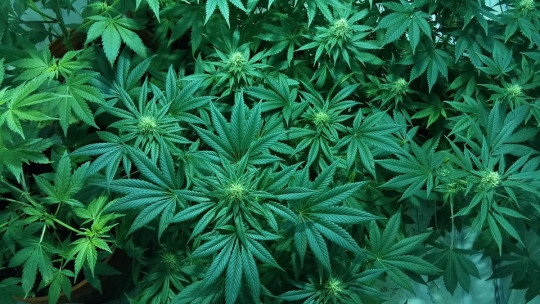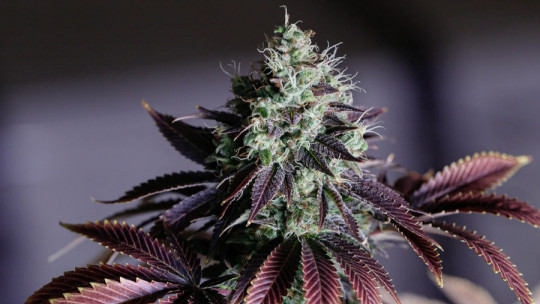Marijuana consumption is a widespread practice today being one of the most consumed drugs.
Although socially It has been seen as a soft drug comparable to alcohol and with relatively little risk in its use (in fact it has interesting properties that make it very useful medicinally in different diseases and disorders), the frequent use of this drug can have relevant long-term negative effects, especially in relation to the brain and its structure.
Of course, That doesn’t mean it’s a very dangerous drug comparable, for example, to heroin. However, the defense that has been made about the supposedly harmless nature of its consumption is difficult to defend today, as we will see.
What is marijuana?
Marijuana It is one of the many ways in which cannabis is consumed , specifically the one that uses chopped and crushed leaves and stems of the plant. This substance has psychoactive properties that have been known since ancient times, having been used medicinally and recreationally since then by different peoples. Today its consumption is widely spread worldwide, especially for recreational and recreational purposes, and is even legalized in some places under certain conditions.
It is a substance whose initial effects are slightly stimulating and euphoric, to induce states of physical and mental relaxation. It causes a decrease in the level of tension and pain, increases the feeling of hunger and reduces and slows down motor movement. It is also effective as an antiemetic and anticonvulsant.
The effects of this product are well known when it comes to the short term. However, There is greater discussion regarding the long-term effects of marijuana , with often contradictory results depending on the type of study that has been carried out. Despite this, today the evidence suggests that its habitual use causes brain health to wear out more than it should over time.
Long-term effects of marijuana
Although cannabis, especially in its marijuana form, is a widely known substance, the studies carried out regarding its effects have always been surrounded by great controversy. A large amount of research has been carried out in this regard, in some cases with unclear results, on the results of its consumption. However, different research has shown that its consumption can cause long-term effects on the brain and behavior.
It is important to keep in mind that we are talking about cases in which consumption occurs frequently over time. The effects in question They depend on the age and the moment of neurodevelopment in which consumption begins as well as the time during which said consumption occurred.
1. Reduction of the orbitofrontal cortex
One of the results that the research has reflected is that the continued use of marijuana causes an obvious reduction in gray matter, especially in the orbitofrontal cortex This also means a lower long-term capacity to carry out tasks that depend on this area, such as impulse control or planning.
2. Increases neural connectivity
Despite the above, many regular users of this substance present apparently normal behavior after many years of using marijuana. The reason for this is that, as reflected in other studies, despite the reduction in gray matter in the brain, connectivity between the remaining neurons is increased so that said loss is somewhat compensated.
That is, although under normal conditions an increase in the connectivity of neurons would be good news, in this case It is the result of many neurons dying , causing those who remain to “work” more; It is a mechanism of the brain to try to compensate for the loss of thickness of the cortex. Furthermore, this increase in connections is increasingly smaller as consumption time increases.
3. Decreased performance and memory capacity
Different studies carried out reflect that habitual cannabis consumption can eventually produce a decrease in the intellectual capacity of the subjects, having lower performance and results in different tests than compared to a non-consumer individual. However, many contradictory results have been found in this type of cognitive competencies, which means that this phenomenon may be of little significance.
What there is solid evidence of is that marijuana consumption produces long-term problems in various types of memory For example, these alterations result in greater difficulty transferring the contents of short-term memory to long-term memory.
It is important to note that these effects are especially noticeable in people who consume throughout their development process, that is, adolescents, due to the structural modification of the brain that cannabis consumption can entail. In already trained adults who begin to consume, this decrease is smaller.
4. Does it promote hippocampal neurogenesis?
One of the positive effects of cannabis that has been most widely reported is the ability to promote formation of new neurons in the hippocampus , region of the brain that is involved in the processing of memories. In fact, one of the medicinal applications of cannabis takes advantage of this factor and the fact that it allows the formation of beta-amyloid protein to be reduced in order to contribute to the fight against certain disorders that cause progressive degeneration of the hippocampus.
However, it has recently been seen that this occurs in laboratory rats used to carry out experiments, but not in humans: in our case, the birth of new hippocampal neurons is practically non-existent in adults.
5. It can cause psychotic breaks
Although it does not occur in all cases, some cannabis variants can facilitate the appearance of psychotic outbreaks in people with a genetic predisposition to them, especially when consumption begins in adolescence. This is because early consumption hinders the correct neuronal maturation of the connection between the prefrontal and limbic system, which facilitates the appearance of hallucinations and makes behavioral control and inhibition difficult. In some cases it can enhance the expression of schizophrenia.
6. Decreased impulse control
Another of the effects observed and directly linked to the decrease in gray matter in the frontal cortex is decreased impulse control The ability to inhibit behavior is linked to specific parts of that lobe, which is responsible for counteracting the power of the limbic system, related to emotions and the appearance of desires.









